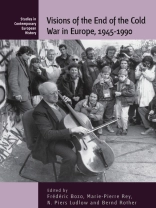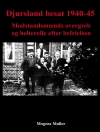Exploring the visions of the end of the Cold War that have been put forth since its inception until its actual ending, this volume brings to the fore the reflections, programmes, and strategies that were intended to call into question the bipolar system and replace it with alternative approaches or concepts. These visions were associated not only with prominent individuals, organized groups and civil societies, but were also connected to specific historical processes or events. They ranged from actual, thoroughly conceived programmes, to more blurred, utopian aspirations — or simply the belief that the Cold War had already, in effect, come to an end. Such visions reveal much about the contexts in which they were developed and shed light on crucial moments and phases of the Cold War.
Innehållsförteckning
PART I: CRYSTALLIZING THE COLD WAR
Chapter 1. George Kennan’s Course, 1947-49: A Gaullist before de Gaulle
John L. Harper
Chapter 2. The Bilderberg Group and the end of the Cold War: The Disengagement Debates of the 1950s
Thomas W. Gijswijt
PART II: STALIN’S DEATH AND AFTER: A MISSED OPPORTUNITY?
Chapter 3. Moscow’s Campaign Against the Cold War, 1945-1955
Geoffrey Roberts
Chapter 4. Stalin’s Death and Anglo-American Visions of Ending the Cold War, 1953
Jaclyn Stanke
Chapter 5. Soviet Intellectuals after Stalin’s Death and Their Visions of the Cold War’s End
Vladislav Zubok
PART III: ALTERNATIVE VISIONS OF THE 1960S
Chapter 6. Towards a New Concert of Europe: De Gaulle’s Vision of a Post-Cold War Europe
Garret Martin
Chapter 7. Franz Josef Stauß and the End of the Cold War
Ronald J. Granieri
PART IV: A HELSINKI VISION?
Chapter 8. A Very British Vision of Détente: The United Kingdom’s Foreign Policy During the Helsinki Process, 1969-1975
Martin D. Brown
Chapter 9. The EC Nine’s Vision and Attempts At Ending the Cold War
Angela Romano
PART V: VISIONS AND DISSENT IN THE 1970S
Chapter 10. ’The Transformation of the Other Side’: Willy Brandt’s Ostpolitik and the Liberal Peace Concept
Gottfried Niedhart
Chapter 11. Neither in One Bloc, Nor in the Other: Berlinguer’s Vision of the End of the Cold War
Laura Fasanaro
Chapter 12. Overcoming Bloc Division from Below: Jiří Hájek and the CSCE Appeal of Charter 77
Christian Domnitz
PART VI: VISION OR STATUS QUO IN THE 1970S
Chapter 13. Henry Kissinger: Vision or Status Quo?
Jussi Hanhimäki
Chapter 14. Valéry Giscard d’Estaing and his Vision of the End of the Cold War
Georges-Henri Soutou
PART VII: EVOLUTIONARY VISIONS AND UNEXPECTED RESULTS IN THE 1980S
Chapter 15. Ending the Cold War, Unintentionally
Gregory F. Domber
Chapter 16. Common Security as a Way to Overcome the (Second) Cold War? Willy Brandt’s Strategy for Peace in the 1980s
Bernd Rother
Chapter 17. Which Socialism after the Cold War? Gorbachev’s Vision and its Impact on the French Left
Marie-Pierre Rey
Chapter 18. Thatcher’s Double Track Road to the End of the Cold War: The Irreconcilability of Liberalisation and Preservation
Ilaria Poggiolini
Chapter 19. Mitterand’s Vision and the End of the Cold War
Fréderic Bozo
Chapter 20. Visions of Ending the Cold War: Triumphalism and US Soviet Policy in the 1980s
Beth A. Fischer
Chapter 21. The Power of Imagination: How Reagan’s SDI Inadvertently Contributed to the End of the Cold War
Marilena Gala
Bibliography
Om författaren
Bernd Rother is a Historian at the Federal Chancellor Willy Brandt Foundation in Berlin. He is editor of Willy Brandt: Über Europa hinaus. Dritte Welt und Sozialistische Internationale(2006) and Willy Brandt: Gemeinsame Sicherheit. Internationale Beziehungen und deutsche Frage 1982-1992 (2009).












